Popular games published by company Lucasfilm Games
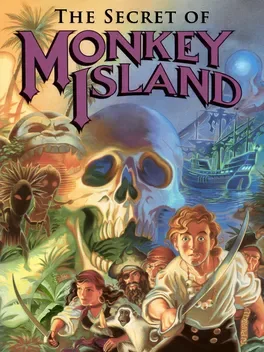
I cursed my luck again as I slid down the monkey's throat. Have my dreams of guzzling grog and plundering galleons been reduced to this? "Three small trials and you're a pirate like us," they said. Fair enough. If only I could stomach the foul brew these scurvy seadogs swilled, the rest would be easy. How could I have known I'd meet a powerful and beautiful woman with a jealous suitor too stupid to realize he'd been dead for years? And how can I crawl through this great stone monkey to find a man who walks three inches above the ground and sets fire to his beard every morning? Do business with quaint and humble shopkeepers. Participate in complex and meaningful dialogues. Visit interesting places and steal stuff. Experience the never-ending nightlife of Melee Island.
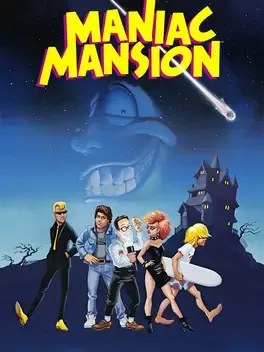
Maniac Mansion is a 1987 graphic adventure video game developed and published by Lucasfilm Games. It follows teenage protagonist Dave Miller as he attempts to rescue his girlfriend from a mad scientist, whose mind has been enslaved by a sentient meteor. The player uses a point-and-click interface to guide Dave and two of his six playable friends through the scientist's mansion while solving puzzles and avoiding dangers. Gameplay is nonlinear, and the game must be completed in different ways based on the player's choice of characters. Initially released for the Commodore 64 and Apple II, Maniac Mansion was Lucasfilm Games' first self-published product.
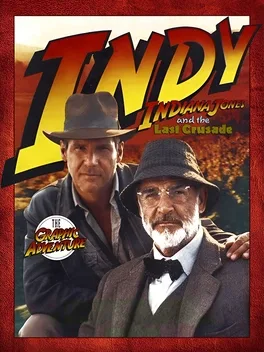
Europe, 1938. The Lost Ark was just a warm up! Now Adolph Hitler is after the most powerful talisman of all- the Holy Grail. A few brave men stand in his way. Fortunately, one of them is Indiana Jones. And this time, he has his dad with him. The bad guys are in your face all the way- Nazis, mercenaries, traitors, spies. Not to mention everything the Luftwaffe can throw at you.. Can you handle the heat? If you can, you just might earn a higher I.Q. (Indy Quotient) than the man with the whip and the hat. Puzzles, action, adventure.
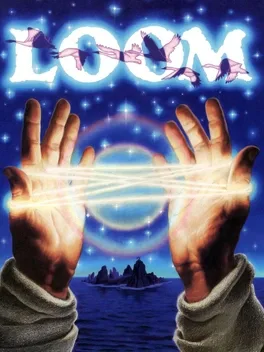
Long after the passing of the Second Shadow, when dragons ruled the twilight sky and the stars were bright and numerous, came the Age of the Great Guilds. Blacksmiths. Shepherds. Clerics. Each dedicated to the absolute control of secret knowledge. Another such Guild was the Weavers. Over the centuries, their craft transcended the limits of physical cloth, until they wove the very fabric of reality itself. Now, a strange power has swept the Weavers into oblivion, leaving behind one Weaver boy to unravel the mystery. Help young Bobbin rescue his Guild...and you just might save the universe from an unspeakable catastrophe.
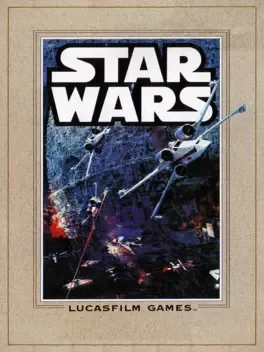
This game is based entirely on the first Star Wars movie, Episode IV: A New Hope. The opening of the game features an animated cinematic of the opening scene of the film. After that the player takes control of Luke Skywalker, driving the landspeeder across Tatooine in search of R2-D2. Luke Skywalker explores various locations throughout Tatooine, fighting numerous enemies including Jawas and Stormtroopers. The game features many locations from the movie including the Chalmun's Cantina in Mos Eisley where Luke meets Han Solo for the first time. This section of the game features a classic 8-bit rendition of the "Cantina Band" theme as played by the fictitious band, Figrin D'an and the Modal Nodes, in the feature film. The game also contains many famous lines from the movie including Obi-Wan Kenobi's plea to Luke to join him in his trip to Alderann and Han Solo's description of the smell from the Death Star's trash compactor. The player eventually lands on the Death Star and has to destroy the tractor beam to escape. The game also features first person segments of piloting the Millenium Falcon through that Asteroid field that was once Alderaan, and shooting down Tie Fighters in both the Millenium Falcon and an X-Wing fighter. The finale of the game features a top down view of Luke Skywalker's X-Wing flying through the Death Star trenches. After the player successfully fires a torpedo into the Death Star's exposed exhaust port, a cinematic of the Death Star exploding and Luke Skywalker being awarded a medal on Yavin IV is shown. The game featured the characters Luke Skywalker, Han Solo, Obi-Wan Kenobi, Princess Leia, R2-D2, and C-3PO. The game however does not feature Darth Vader or Chewbacca, both of whom are major characters in the film.
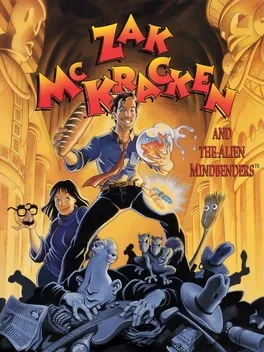
Zak McKracken is a tabloid reporter (and not a very good one at that). After having a psychedelic dream one day, Zak realizes that something is wrong -- space aliens are dumbifying the general public through the telephone system. Zak must stop this, but he can't do it alone. After finding a strange crystal, Zak manages to get the help of the anthropologist Annie and her friends, Melissa and Leslie. The four unlikely heroes must now figure out a way to destroy the dumbifying devices and save the Earth. Zak McKracken and the Alien Mindbenders is a third-person puzzle-solving adventure similar in gameplay to Lucasfilm's breakthrough title Maniac Mansion. The player chooses verb commands (Open, Pick Up, Give, etc.; there are no Look or Talk commands) to interact with the game world. The game features up to four controllable protagonists; it is possible to switch between them at any time after they have been introduced, and also exchange inventory items if the characters are in the same location. The game can be described as a "globe-trotting" adventure, since the heroes are required to travel to different exotic countries and even leave the Earth for a while in order to complete it. Some of the puzzles are optional or can be solved in different ways. The FM Towns version has VGA graphics with 256 colors and higher-quality music and sound effects.
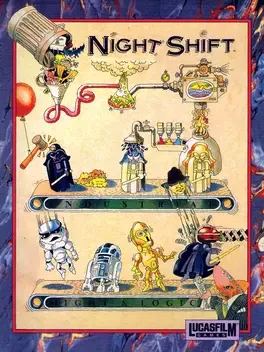
Night Shift is a unique action game where the hero is a worker in a factory owned by Industrial Might and Logic (a parody of Industrial Light and Magic). Your character ensures that the factory is working properly as it cranks out Star Wars action figures, including those of stormtroopers and Darth Vader. The object of the game is to always ensure the factory is working properly, and to move in an increasingly better home.
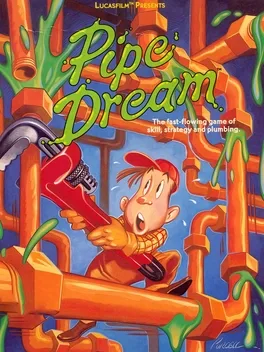
Each level of this abstract puzzler challenges the player to set up a network of pipes to allow an unspecified substance known as 'flooz' to flow through as many of those as possible. The pieces are offered in random order, and there are seven different types - straight lines going horizontally or vertically, corners rotating in each of the four directions, and cross-over pieces which carry the flooz straight across horizontally and vertically. Each of these can be entered from either side. When the flooz hits a gap, or a piece which the previous piece can't flow into, the pipe is finished. Before the flooz starts flowing from its randomly-selected starting position, the player has several seconds to start placing pieces. They can be put down anywhere. However a situation that can often occur is there will be a long and complex piping arrangement set up, yet a gap somewhere remains to be filled. Players are able to replace a piece with another in the same square (to make it easier to flow the flooz that way), but for a slight scoring penalty.
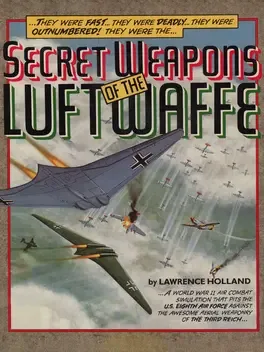
After the success of the simulation titles Their Finest Hour: The Battle of Britain® and Battlehawks 1942 in the late 80s, LucasArts decided to follow up those games with another World War II simulation title: Secret Weapons of the Luftwaffe. Released in August 1991, the game followed the campaign by the US 8th Air Force to cripple the German Luftwaffe during the final years of World War II. Players could fly in either American or German warplanes. The game was remarkable because many of the playable airplanes were still under development during the war. In other words, the planes were never used extensively in battle, so players could explore “what if ” possibilities with the game. Those possibilities were further expanded by four Tour of Duty expansion packs. The planes in those expansions included the P-38 Lighting, a twin-engine escort fighter and the German Do335, an interceptor aircraft that featured a conventional tractor propeller in the nose as well as a pusher propeller behind the tail of the aircraft.
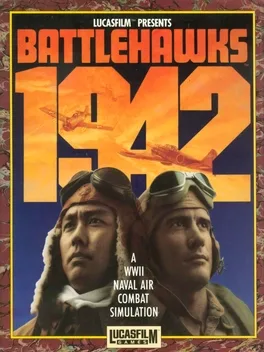
Battlehawks 1942 is a groundbreaking World War II flight combat simulation game developed by Lucasfilm Games in 1988. Set in the Pacific Theater during the crucial year of 1942, the game allows players to experience aerial warfare from both American and Japanese perspectives. It focuses on three major naval battles: the Coral Sea, Midway, and the Eastern Solomons, offering a variety of historically accurate aircraft to pilot, including the American F4F Wildcat and SBD Dauntless, and the Japanese A6M Zero and D3A Val. The game stands out for its attention to historical detail and innovative graphics for its time. Players engage in diverse missions, from carrier defense to ship attacks and dogfights, with a unique damage model that visually represents the effects of combat on aircraft and vessels. Battlehawks 1942 successfully balances simulation elements with arcade-style action, making it accessible to a wide range of players while maintaining historical authenticity. Its multiple perspectives and varied missions provide significant replay value, cementing its status as a classic in the flight combat simulation genre and offering an engaging entry point to World War II air combat.
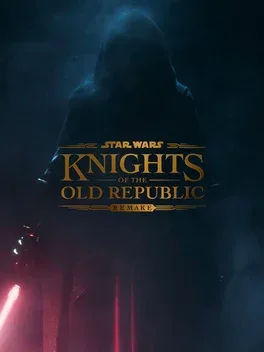
Star Wars: Knights of the Old Republic - Remake is a modernized recreation of BioWare's 2003 role-playing classic set 4,000 years before the events of the Star Wars films. Players create a Jedi character and navigate the sprawling galactic conflict between the Republic and the Sith Empire. Through choices, lightsaber combat, and Force powers, players uncover a story that reveals their character's true identity while shaping the fate of the galaxy. The remake features rebuilt visuals, updated gameplay mechanics, and refined combat systems while preserving the original's narrative and role-playing elements.
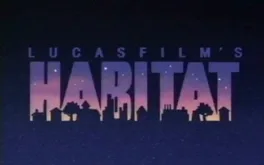
The first graphical character-based interactive environment, supported up to 64 simultaneous players.
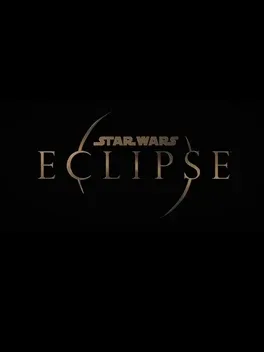
A new action-adventure, multiple-character branching narrative game set in the High Republic era, presented to you by Quantic Dream and Lucasfilm Games. Now early in development.
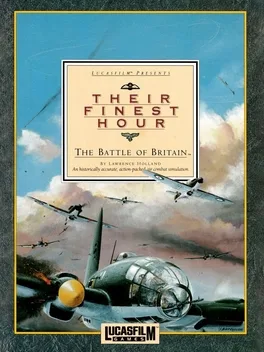
Their Finest Hour: The Battle of Britain is a World War II combat flight simulation game by Lawrence Holland, released in October 1989 for the Amiga, Atari ST and MS-DOS systems. It was the second game in the trilogy of World War II titles by Lucasfilm Games, the others being Battlehawks 1942 (1988) and Secret Weapons of the Luftwaffe (1991). The game was released with a 192-page manual written by Victor Cross, that provided a detailed historical overview of the battle and pilots' perspectives. An expansion pack, Their Finest Missions: Volume One, was released in 1989.
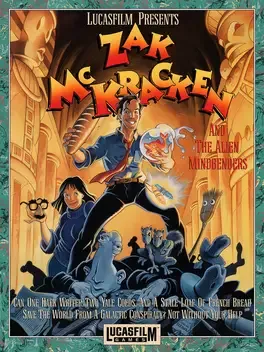
Zak McKracken and the Alien Mindbenders Enhanced is a modernized version of the classic 1988 point-and-click adventure game developed by Lucasfilm Games. This enhanced edition retains the original's quirky humor and imaginative storyline while updating its visuals and gameplay for contemporary audiences. The game follows Zak McKracken, a tabloid journalist, as he uncovers a global alien conspiracy to reduce human intelligence. Players navigate Zak and his companions through various locations on Earth and beyond, solving puzzles and interacting with a cast of eccentric characters. The enhanced version likely features improved graphics, smoother animations, and potentially updated controls to make the game more accessible to modern players. While maintaining the charm and wit of the original, this version aims to introduce a new generation to the beloved adventure game, showcasing its innovative multi-character gameplay and blend of science fiction and comedy that made it a cult classic in the adventure game genre.
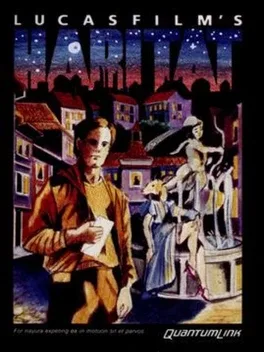
Habitat is a pioneering massive multiplayer online game (MMO) developed by Lucasfilm Games that laid the foundation for modern MMORPGs. Released as a beta test on Quantum Link's online service, it allowed up to 500 players to simultaneously explore a vast, open-ended virtual world. Despite lacking traditional RPG elements like leveling or classes, Habitat broke new ground by offering a persistent, shared environment where players could interact through customizable avatars in a 2D, third-person perspective. The game's emphasis on social interaction and player-driven content was revolutionary for its time. Players could engage in a wide range of activities, from simple communication and object manipulation to complex social endeavors like marriage, commerce, and even founding religions or guilds. The game world, comprised of thousands of diverse regions, encouraged exploration and discovery. Habitat's innovative features, including an in-game economy, player-run businesses, and global quests organized by the developers themselves, showcased the potential of virtual worlds as social platforms. This libertarian approach to gameplay, where players were limited only by the game's code, set a precedent for user-generated content and emergent gameplay in online worlds, influencing the development of future MMORPGs and virtual communities.